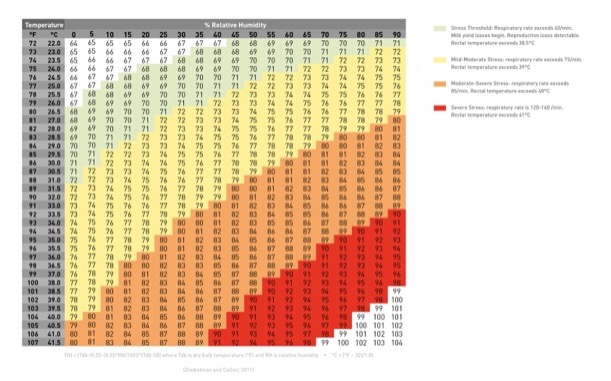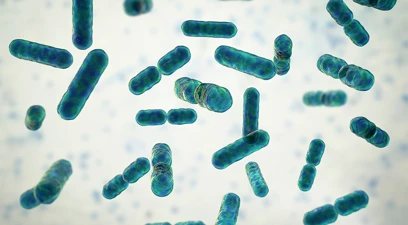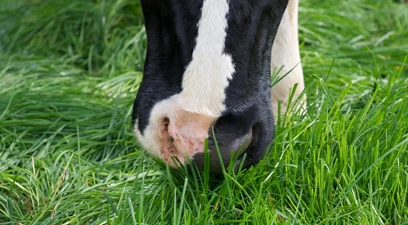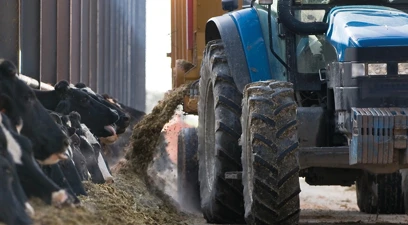Managing heat stress from the inside out
Heat stress is not only a challenge faced by milk producers in warmer climates - cows are also susceptible to it here in the UK and Ireland. Increasing evidence shows that even our relatively low summer temperatures can significantly impact the productivity, reproduction, health and welfare of our herds.
What is heat stress?
Heat stress occurs when an animal’s total heat load exceeds its capacity for heat dissipation, causing core body temperature to rise above its normal level of approximately 38.8°C.
As temperature alone is not enough, we use the Temperature Humidity Index (THI) which measures the combined effect of ambient temperature and relative humidity.

For example, at around 80% humidity - a fairly average summer humidity level in the UK & Ireland - cows will begin to reach the threshold for heat stress in temperatures as low as 20°C! Even at this early stage of heat stress (shown in green on the THI chart), cows begin to lose yields, fertility is affected and rectal temperature exceeds 38.5°C.
Globally, a THI of 72 is recognised as the threshold for mild to moderate heat stress, however more recent studies throughout Northern Europe have established that a THI of 62 can bring negative impacts on reproduction, productivity and immune function.
Signs and effects of heat stress
When they start to overheat, cows will find a way to lower their internal temperature, primarily by:
- Eating less - as fermentation creates heat
- Panting
- Standing more than usual
- Sweating
The resulting reduction in Dry Matter Intake (DMI) ultimately leads to:
- Reduced milk yield and milk solids
- Poorer expression of oestrous
- Increased risk of lameness
- Increased risk of mastitis
When experiencing heat stress, cattle will exhibit additional signs, such as:
- Become visibly lethargic
- Standing for extended periods with a bowed head
- Drinking more
- Rapidly increasing respiration rates, from 20-40 breaths per minute to 60+ breaths per minute.
- Fresh air seeking behaviour at gates, especially where ventilation is poor
- Reduced rumination/cudding rates
- Signs of acidosis, including loose dung and reduced rumen fill
What to do about heat stress
There are a number of steps that farmers can take to combat heat stress and its impact on cows.
- Carefully monitor water supply and pressure in troughs or drinkers.
- Avoid bunching cows in collecting yards.
- Maximising diet freshness, access and quality to maintaining DMI
- Ensure cows have access to shade when turned out by grazing them in fields with trees during the day (fields with no shade can be grazed overnight).
Research has shown that feeding Actisaf® during risk periods for heat stress is significantly beneficial, improving health and performance by supporting rumen function. This action simultaneously mitigates the risk of acidosis and boosts the efficiency of feed utilisation.
Additionally, as Actisaf® improves rumen function, it also helps protect cows from heat stress through increased Niacin production - at similar levels to supplemented Niacin.
Niacin, or Vitamin B3, has been proven to help cows regulate their body temperature, which in turn improves their tolerance of heat and humidity. Because this vitamin is produced by the rumen microbes during digestion, a more efficient rumen produces more Niacin.
Learn more about heat stress and how Actisaf® can help...
Download our free guide today or watch the video below...
Related Tech Info

Feed the rumen microbes for improved feed efficiency in dairy herds
As dairies across the UK and Ireland look ahead to winter feeding, there is much to be considered. With high feed costs and l...

Top tips for grazing turnout...
Every farmer will have noticed that protein prices have surged over the past months, driving up the cost of other raw materia...

Save on production costs by maximising efficiency
Making the most of forage and feed will be key to controlling costs on dairy farms across the country. Feed efficiency is a c...
